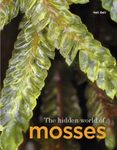![Liverworts, Mosses and Hornworts of Southwest Asia Liverworts, Mosses and Hornworts of Southwest Asia]()
Click to have a closer look
About this book
Contents
Customer reviews
Related titles
About this book
Language: English
The new, enlarged and revised flora replaces the former flora The Liverworts, Mosses and Hornworts of Southwest Asia: Marchantiophyta, Bryophyta, Anthocerotophyta (2011, Nova Hedwigia Beiheft 139) which was the first comprehensive bryophyte flora and well-structured synthesis of the current knowledge available on the liverworts, mosses and hornworts of Southwest Asia (Near and Middle East). As the former flora, this enlarged and revised new edition covers Afghanistan, Bahrain, Iraq, Iran, Israel, Jordan, Kuwait, Lebanon, Oman, Qatar, Saudi Arabia, Sinai Peninsula, Syria, Turkey, United Arab Emirates, and Yemen (incl. the Socotra Archipelago), summarized to a great extent as "Asia 5" in the Index Muscorum. Since the first publication in 2011, scientific interest in bryophytes drastically increases, resulting in more than 70 additional species, formerly unknown to the area and the first moss records to Qatar Peninsula. In total, nearly 1400 taxa (255 liverworts, 1128 mosses, 5 hornworts) and nearly 2300 names and synonyms were treated. The dichotomous keys provide families, genera and species, including annotations to distribution and to critical, doubtful or erroneously recorded species.
The flora includes all bryophyte taxa known to date within this large and varied climatological and geomorphological area. It responds to the tools of the Conservation on Biological Diversity and the Target 1 of the updated Global Strategy for Plant Conservation. The main goal beside identification is to achieve a checklist of all known plants of this often neglected and/or overlooked group of organisms. It is a further step to integrate Southwest Asia (Near and Middle East) into the Global Network of floristic knowledge.
As many of the species are important initial colonizers of bare rocks, crusts and soil surfaces in steppe and desert regions of the area and are forerunners in vascular plant colonization and succession, their knowledge is of fundamental importance for understanding phytodiversity and ecosystems and provides access to taxonomic information, important for nature conservation. It enables us to give a more precise answer to the question of how many plant species occur in the area and it is a step to enhanced education and scientific understanding on the wealth of plant diversity.
The book is recommended to all botanists and ecologists, interested in bryophyte flora and vegetation, biodiversity and nature conservation and may stimulate and promote greater interest in bryophytes. We hope, it is also in future a mandatory reference for students, experts and researchers.
Contents
Abstract 4
Preface 4
Introduction 5
Geographical boundaries of Southwest Asia 5
Key to the suprafamilial taxa of bryophytes of Southwest Asia 7
Marchantiophyta (Liverworts) 10
Conspectus of classification of the Marchantiophyta 10
Class: Blasiopsida 15
Class: Marchantiopsida 15
Class: Fossombroniopsida 29
Class: Pallaviciniopsida 31
Class: Pelliopsida 31
Class: Jungermanniopsida 32
Bryophyta (Mosses) 59
Conspectus of classification of the Bryophyta 59
Class: Sphagnopsida 70
Class: Andreaeopsida 74
Class: Tetraphidopsida 74
Class: Polytrichopsida 74
Class: Bryopsida 78
Key to the acro-, clado- and pleurocarpous mosses of South west Asia 78
Key to the acro- and cladocarpous mosses of Southwest Asia 80
Key to the pleurocarpous mosses of Southwest Asia 195
Anthocerotophyta (Hornworts) 241
Conspectus of classification of the Anthocerotophyta 241
Acknowledgements 242
References 243
Index of taxa 251
Customer Reviews



































![Bibliotheca Diatomologica, Volume 15: Bacillariaceae, Epithemiaceae, Surirellaceae [German]](http://mediacdn.nhbs.com/jackets/jackets_resizer_medium/62/62828.jpg?height=150&width=93)
![Bibliotheca Diatomologica, Volume 38: Insel der Endemiten: Geobotanisches Phänomen Neukaledonien [Island of Endemics: New Caledonia – A Geobotanical Phenomenon]](http://mediacdn.nhbs.com/jackets/jackets_resizer_medium/94/94205.jpg?height=150&width=96)







